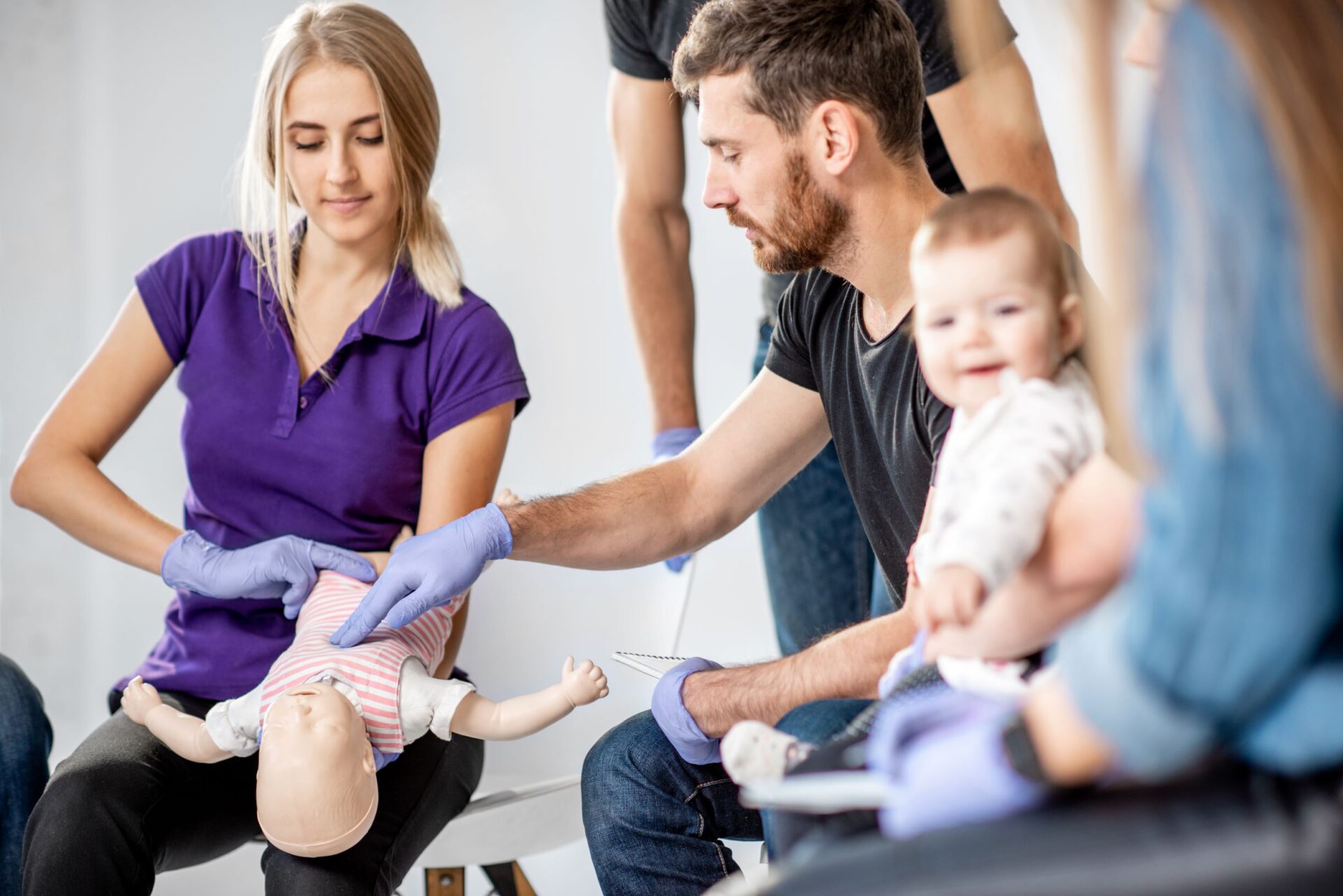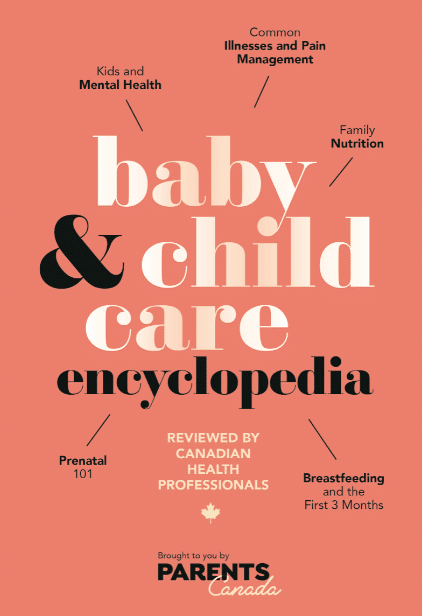advertiser-bcce From the pages of the Baby & Child Care Encyclopedia: Chapter 8, Safety and First Aid
From the pages of the Baby & Child Care Encyclopedia: Chapter 8, Safety and First Aid
The process for CPR varies depending on the age of the child. Read on for how to perform this procedure as your child ages.
Knowing how to perform CPR on your child, at every age, offers tremendous peace of mind to parents. We’ve created this primer to give you the basics, but it’s always a good idea to take a class in your community.
This chapter is for reference only. It should not be considered a substitute for an up-to-date first aid or CPR training course. We recommend all parents and caregivers receive CPR training.
Giving CPR to a your baby
Begin CPR immediately if your baby is unresponsive and not breathing (just gasping), not responding to touch, not moving or showing signs of alertness. If you’re not alone, ask someone to call 911 and get an automated external defibrillator (if available) while doing CPR. If you’re alone and have a smartphone, put it on speaker and start CPR while calling 911. If you’re alone and don’t have access to a phone, start CPR for two minutes and then call 911 from a landline.
- Begin CPR by laying your baby down on a firm, flat surface. Do not spend time trying to find a pulse. Place your two fingers on the breastbone, just below the nipple line. Give your baby 30 quick chest compressions (push fast), pressing hard enough so their chest moves approximately 4 centimetres (1.5 inches) down (push hard).
- Count out loud. You should deliver about 100 to 120 compressions a minute. Wait for the chest to come all the way back to its initial position between compressions. This will get the blood flowing to your baby’s brain and other vital organs.
- After the first 30 chest compressions, place the palm of your hand on your baby’s forehead. Place two fingers on the hard, bony tip of their chin and gently tilt their head back. This will open the airway. Pinch your child’s nose and place your mouth over their mouth and give two breaths. Each breath should be just enough to make your child’s chest rise and should be no more than one second in length. Make sure you see your child’s chest rise with each breath.
- Give cycles of 30 chest compressions and two breaths during two minutes and repeat until the ambulance arrives or your baby starts breathing again. Two minutes usually allow for five cycles of 30 chest compressions and two breaths. A two-minute CPR cycle is usually tiring. If you are not alone, switch who is giving CPR every two minutes.
- Once your baby has recovered and started breathing again on their own, your baby may vomit and find it difficult to breathe. Simply put your baby in the recovery position: Their chin should point slightly away from the chest and their face should rest on the surface on which the baby is laying. Make sure nothing is blocking or covering your baby’s mouth and nose. The recovery position will help keep your baby’s airway open.
CPR in a child (1 to puberty)
Begin CPR immediately if your child is unresponsive and not breathing (just gasping), not responding to touch, not moving or showing signs of alertness. If you’re not alone, ask someone to call 911 and get an automated external defibrillator (if available) while doing CPR. If you’re alone and have a smartphone, put it on speaker and start CPR while calling 911. If you’re alone and don’t have access to a phone, start CPR for two minutes and then call 911 from a landline.
- Begin CPR by laying your child down on a firm, flat surface. Do not spend time trying to find a pulse. Place the heel of one or two hands over the lower third of your child’s breastbone and give them 30 quick chest compressions (push fast). Be sure to push hard enough so their chest moves approximately 5 centimetres (2 inches) down (push hard).
- Count out loud. You should deliver about 100 to 120 compressions a minute. Wait for the chest to come all the way back to its initial position between compressions. This will get the blood flowing to your child’s brain and other vital organs.
- After the first 30 chest compressions, place the palm of your hand on your child’s forehead. Place two fingers on the hard, bony tip of their chin and gently tilt their neck back. This will open your child’s airway.
- Pinch your child’s nose and place your mouth over their mouth and give two breaths. Each breath should be just enough to make your child’s chest rise and should be no more than one second in length. Make sure you see your child’s chest rise with each breath.
- Give cycles of 30 chest compressions and two breaths during two minutes and repeat until the ambulance arrives or your child starts breathing again. Two minutes usually allow for five cycles of 30 chest compressions and two breaths. A two-minute CPR cycle is usually tiring. If you are not alone, switch who is giving CPR every two minutes.
- Once your child has recovered and started breathing again on their own, put them in the recovery position until help arrives. The recovery position will help keep your child’s airway open and prevent them from choking on their own vomit. If your child vomits, wipe it away.
- Make sure nothing is blocking or covering their mouth and nose.
- Prenatal 101
- Breastfeeding and the First Three Months
- Starting Solids and the Toddler Years
- An Age-by-Age Guide to Sleep
- Family Nutrition
- Kids and Mental Health
- When Your Child is Sick
- Safety and First Aid
- Milestones, Checklists and Charts



 From the pages of the Baby & Child Care Encyclopedia: Chapter 8, Safety and First Aid
From the pages of the Baby & Child Care Encyclopedia: Chapter 8, Safety and First Aid